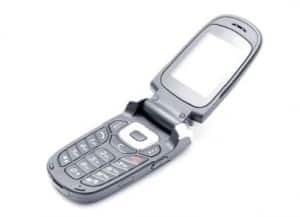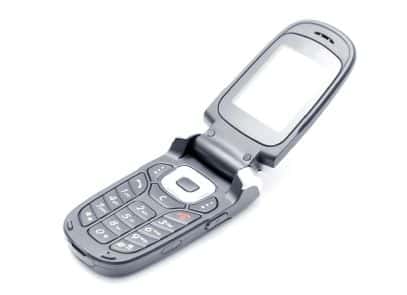
At the other end lie the latest, feature-packed smartphones, armed with mammoth color touchscreens, high-resolution cameras, full-on keypads worthy of a typewriter, brains the size of yesterday’s supercomputers, and price tags to match.
But there’s also another category that tends to crop up whenever you go cell-phone shopping: the mysterious, so-called “feature” phone.
OK, so what’s a feature phone? Are we talking some kind of middle-of-the-road cell phone, with some of the fancier smartphone features (like full QWERTY keypads and video cameras), or maybe a basic phone with a dash of style (like flashy colors or slim profiles)? What’s the deal?
Well, here’s the thing: A “feature” phone is a label used by many cell phone carriers to describe just about any phone that isn’t a smartphone—including everything from the most basic, bottom-of-the-line handsets to fancier phones with music players, camera, and even touchscreens.
So, what defines a “smartphone,” then?
These days, we think of smartphones as handsets that run on a mobile “platform” like Apple’s iOS (for the iPhone), Android (which powers phones like the Motorola Droid), BlackBerry, Microsoft’s Windows Phone (or Windows Mobile, as it used to be called), Web OS (from HP), and Nokia’s “Symbian” operating system.
These “platforms” are basically scaled-down versions of desktop operating systems, like Windows on your PC or Mac OS for the MacBook or iMac. They can run sophisticated applications (or apps) and games with 3-D graphics, as well as get regular updates that add new features (like voice commands or turn-by-turn driving directions) to the handset.
If your phone doesn’t run on any of those platforms (and if you’re not sure, ), then it’s probably a “feature” phone—even if it comes with such bells and whistles as a color touchscreen, a video player, a high-resolution camera, downloadable games, or even a full-on QWERTY keypad that slides out from beneath the display.
At the end of the day, of course, it’s the carriers who decide what’s a “feature” phone and what isn’t—a key distinction when it comes to your monthly cell phone bill.
While smartphones typically require pricey wireless data plans, on the order of at least $25 a month, “feature” phones will let you browse the web, post to Facebook, and check your email for as little as $10 or a month—or you can even skip the data plan altogether if you only want to use your phone for phone calls (imagine that).
Got more questions about “feature” phones versus smartphones? Let me know!


I’m looking for a cell phone with good video camera capability – many have 720p and 30 fps. But I don’t need any smartphone features at all. Only the ability to make and receive phone calls. I won’t even be texting. I only get AT&T service here in the rural area where I live, so AT&T is my carrier. If I understand SIM cards correctly, that means I cannot use an unlocked Microsoft Kin Two because it is CDMA and has no SIM card in it. Since I won’t be using any data features (not even texting), I don’t want to pay for an AT&T data plan, either. So that rules out any AT&T Smartphone, since now AT&T requires you to have at least the minimum ($15/mo) data plan with any smartphone they sell (such as the refurbished Samsung Captivate for $9.95).
Is there a GSM featurephone (not smartphone) with 720p video camera?
I’ve been looking for one over at wireless.att.com and can’t find anything—or at least, not anything that isn’t a smartphone.
Anyone else out there have any ideas?